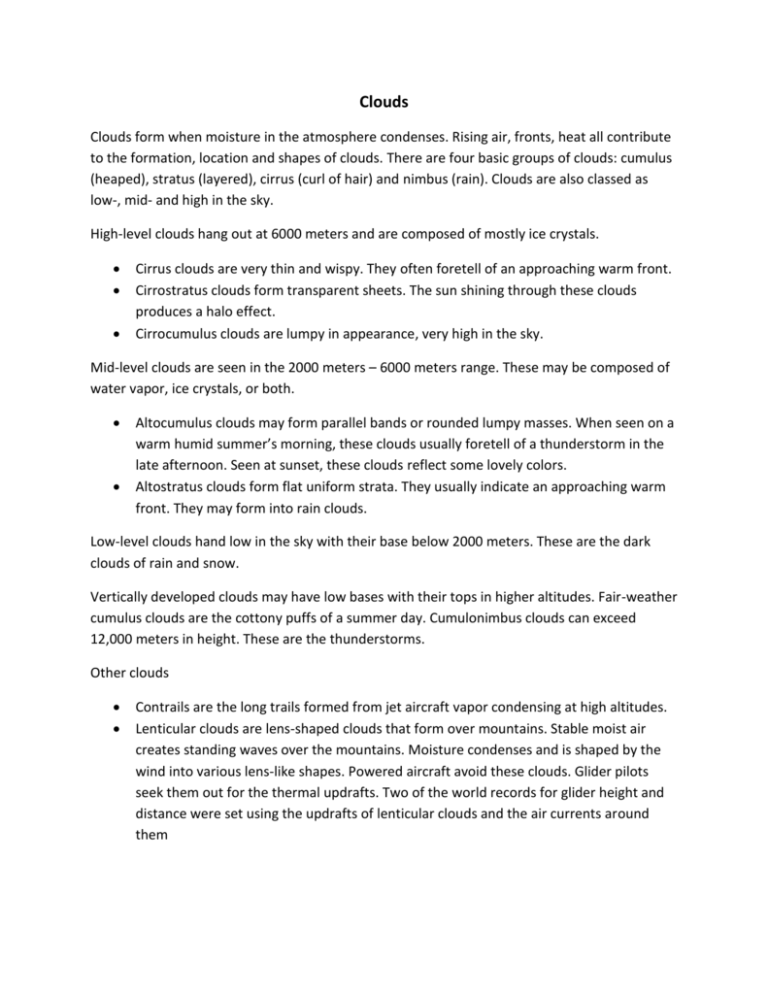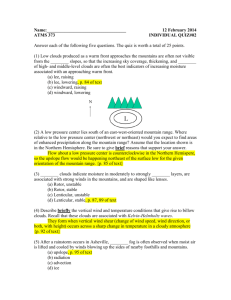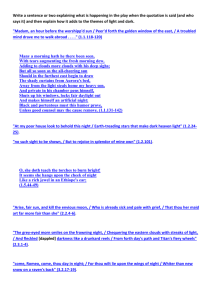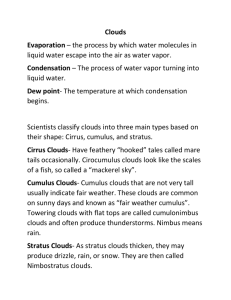What are those fluffy things in the sky?
advertisement

Clouds Clouds form when moisture in the atmosphere condenses. Rising air, fronts, heat all contribute to the formation, location and shapes of clouds. There are four basic groups of clouds: cumulus (heaped), stratus (layered), cirrus (curl of hair) and nimbus (rain). Clouds are also classed as low-, mid- and high in the sky. High-level clouds hang out at 6000 meters and are composed of mostly ice crystals. Cirrus clouds are very thin and wispy. They often foretell of an approaching warm front. Cirrostratus clouds form transparent sheets. The sun shining through these clouds produces a halo effect. Cirrocumulus clouds are lumpy in appearance, very high in the sky. Mid-level clouds are seen in the 2000 meters – 6000 meters range. These may be composed of water vapor, ice crystals, or both. Altocumulus clouds may form parallel bands or rounded lumpy masses. When seen on a warm humid summer’s morning, these clouds usually foretell of a thunderstorm in the late afternoon. Seen at sunset, these clouds reflect some lovely colors. Altostratus clouds form flat uniform strata. They usually indicate an approaching warm front. They may form into rain clouds. Low-level clouds hand low in the sky with their base below 2000 meters. These are the dark clouds of rain and snow. Vertically developed clouds may have low bases with their tops in higher altitudes. Fair-weather cumulus clouds are the cottony puffs of a summer day. Cumulonimbus clouds can exceed 12,000 meters in height. These are the thunderstorms. Other clouds Contrails are the long trails formed from jet aircraft vapor condensing at high altitudes. Lenticular clouds are lens-shaped clouds that form over mountains. Stable moist air creates standing waves over the mountains. Moisture condenses and is shaped by the wind into various lens-like shapes. Powered aircraft avoid these clouds. Glider pilots seek them out for the thermal updrafts. Two of the world records for glider height and distance were set using the updrafts of lenticular clouds and the air currents around them






